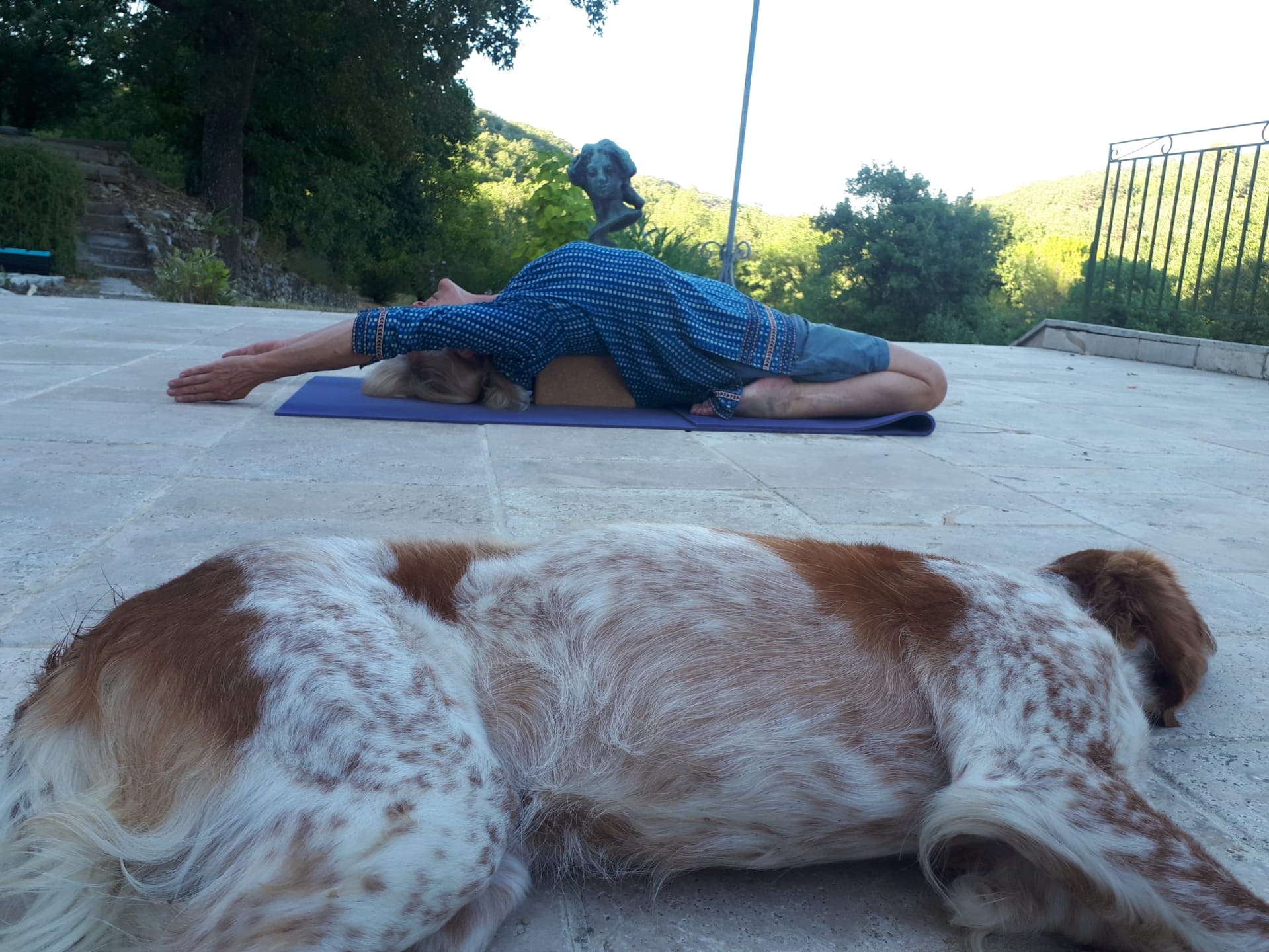It’s a big word, but I do claim yoga can bring us freedom. It helps us to break out of that negative feeling of the body as a prison. The ultimate imprisonment is of course to become immobile, bound to a wheelchair.
In a documentary film called Debout, the French filmmaker Stephane Haskell tells his own story of how he through extremely hard work, over the course of a couple of years, got his mobility back in his legs, but he also shows the healing power of yoga from all corners of life.
One of the sequences is from San Quentin prison, where the prisoners participate in weekly yoga classes. One of the prisoners who are on death row refers to his experience in a moving sentence. He knows he’ll never be free and return to society again, through yoga he can experience freedom in his own body and mind.
The simple feeling of release after regulating your breath, and then letting go, or the return after a deep twist, is akin to freedom. During our weeks in Provence, I participated in several workshops.
One full weekend concerned adaptive yoga with a yoga teacher in Rochester, New York, Michael Amy. He works with students who are partially paralyzed, and of course, it puts into perspective our own little bobos.
Although the course was on video, I could physically sense the freedom the students expressed as they were helped out of the wheelchair, stretching their legs with the help of assistants.
They performed sun salutations in the chair, to get the spine to curve ever so slightly, opening up the chest to the world, and again, the pleasure was tangible, even across the screen.
Even for us, who are lucky to have functional limbs, there is a greater sense of freedom to be had on the mat and, more importantly, outside it. However, this sensation is not off, but something you build up over the course of regular practice.
Warm regards,
Emily
